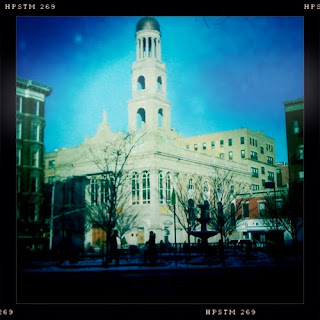Exploring the Italian South Village
 The South Village is one of the country’s oldest Italian-American neighborhoods, with roots going back to the Civil War era. According to "The Italians in the South Village" by historian Mary Elizabeth Brown, a report commissioned by the Greenwich Village Society For Historic Preservation, between 1880 and 1920 more than 50,000 Italian immigrants settled in the South Village. Mayor Fiorello LaGuardia was born here. The Italian presence in this lively area south of Washington Square Park gives the place a feeling of a tight-knit European neighborhood.
The South Village is one of the country’s oldest Italian-American neighborhoods, with roots going back to the Civil War era. According to "The Italians in the South Village" by historian Mary Elizabeth Brown, a report commissioned by the Greenwich Village Society For Historic Preservation, between 1880 and 1920 more than 50,000 Italian immigrants settled in the South Village. Mayor Fiorello LaGuardia was born here. The Italian presence in this lively area south of Washington Square Park gives the place a feeling of a tight-knit European neighborhood.Italian restaurants such as Il Mulino, Bar Pitti, Bellavitae, Ennio & Michael (CLOSED), Ponte Vecchio, Porto-Bello, Pepe Rosso, Ciao, John's Pizzeria, Tre Giovanni, and many more thrive on the streets, and Italian specialty shops at Raffetto's (Houston Street), Faicco (Bleecker Street), Porto Rico Importing Company (Bleecker), Joe's Dairy (Sullivan Street), and Ottomanelli's Meat Market (Bleecker) treat residents like members of an extended family.
The churches, Our Lady of Pompeii Church and St. Anthony of Padua, sustain the traditional bonds of the community. The cafes and pastry shops - Caffe Reggio, Caffe Dante, La Lanterna di Vittorio, Rocco's, Pasticceria Bruno, and others - have become fixed points of reference for the neighborhood's artistic and intellectual heritage. Over the years, however, the number of Italian-Americans living in the Village has dwindled to only a fraction of the population.
View The Italian South Village in a larger map
Many visitors know the South Village for its music clubs and taverns, the historic folk and off-Broadway scenes, chess stores, its diversity of charming architecture, and for college students running amok. The Italian immigrant heritage is only one part of the Village story, but it's unbearable to think of the area without it. The Greenwich Village Society For Historic Preservation, founded in 1980, has worked to preserve the neighborhood along with other vulnerable areas nearby. Citing
 development pressures, the organization in 2007 offered a proposal to the Landmarks Preservation Committee for the creation of a South Village Historic District.
development pressures, the organization in 2007 offered a proposal to the Landmarks Preservation Committee for the creation of a South Village Historic District.While large sections of Greenwich Village, especially its affluent blocks, fall under an historic designation from 1969, the streets many associate with the bohemian Village - Bleecker, MacDougal, Sullivan, Thompson, Carmine, Minetta Lane, and others - the heart of the Italian immigrant neighborhood - are currently not protected. The current efforts to protect the area from reckless encroachment are part of a longer story, as residents have fought insensitive developers for over fifty years. Interested readers can visit the website for the Greenwich Village Society for Historic Preservation for more information.
With its small shops, bars, coffee houses, restaurants, and music venues, the South Village is perfect for strolling. At night during warm weather, crowds spill out onto the streets, but during cold weather, the coffee shops make great stops on a winter walk. On the way home, stop into an Italian grocery and pick up dinner. Instead of a fixed route, spend time wandering around. Without the Italian presence, the Village would not be the Village.
Images of Father Demo Square and Our Lady of Pompeii Church, and a cafe setting at Caffe Reggio by Walking Off the Big Apple from February 17, 2010.




